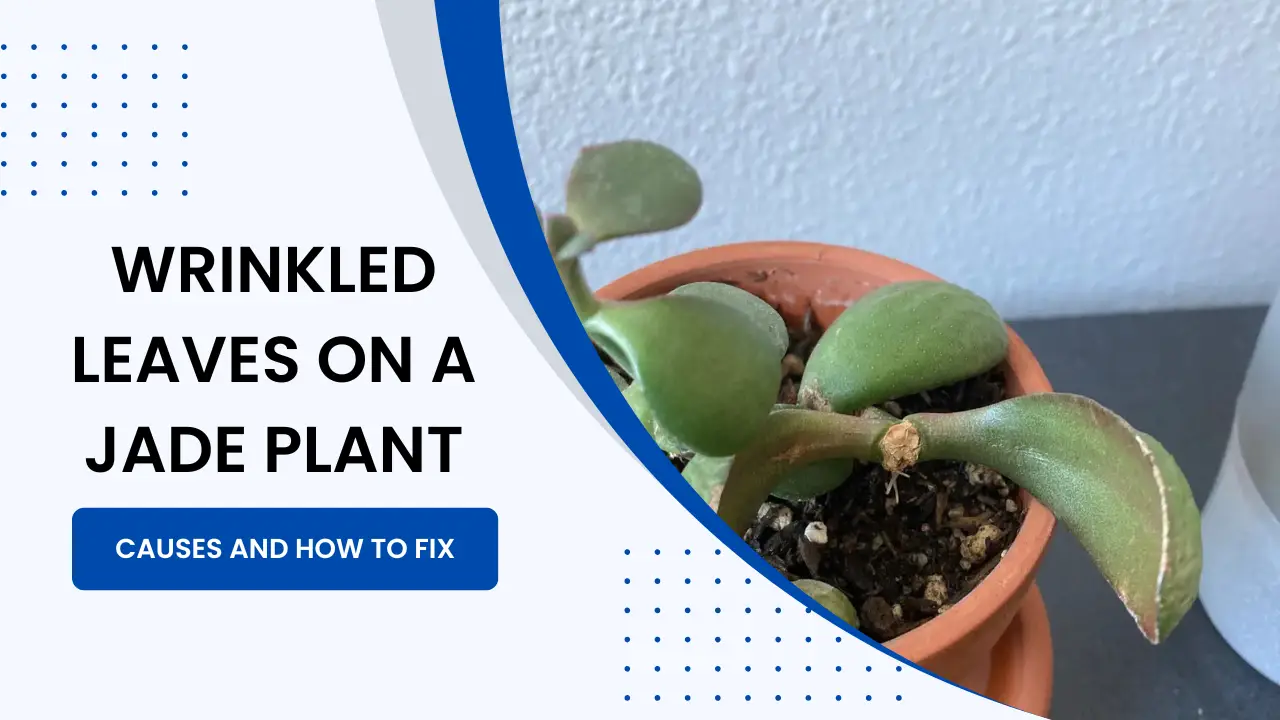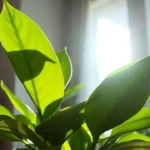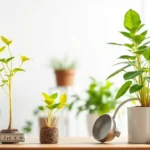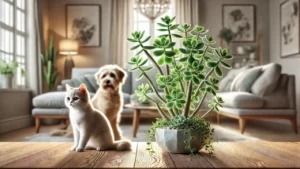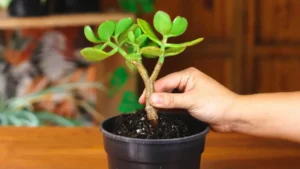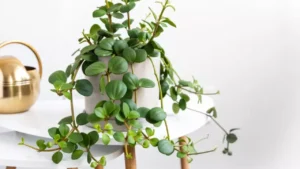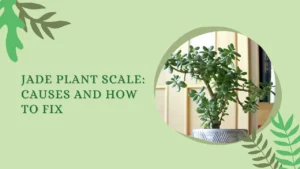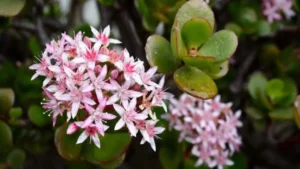Anyone who has ever shown interest in gardening knows that jade plants are amazing indoor plants. They are resilient and known to withstand a lot of tough conditions, without a lot of help.
But there still are some things that might affect your plants. These conditions might vary, from root rot to stunted growth but one of the most common problems might be the wrinkling of your jade plants.
What can one do in conditions of this sort? This article will guide you through everything there is to know in a situation of this sort.
Table of Contents
What do We Know About the Jade Plant?
The jade plant is known to be a popular succulent houseplant with fleshy, oval-shaped leaves and thick, woody stems that resemble tiny tree trunks. With just a bit of care, it can grow to be between 3 and 6 feet tall, but it does so slowly, growing about 2 inches a year.
This small beauty, with its round leaves and smooth unique texture, is known to bring luck and symbolizes growth, prosperity, wealth, and positive energy.
Also if you are having a little tiff with your friends, the Jade Plant might help in the flourishing of your friendship. You do not need to be lucky to know how to properly care for a healthy jade plant because it is fairly easy.
Taking Care of Jade Plants?
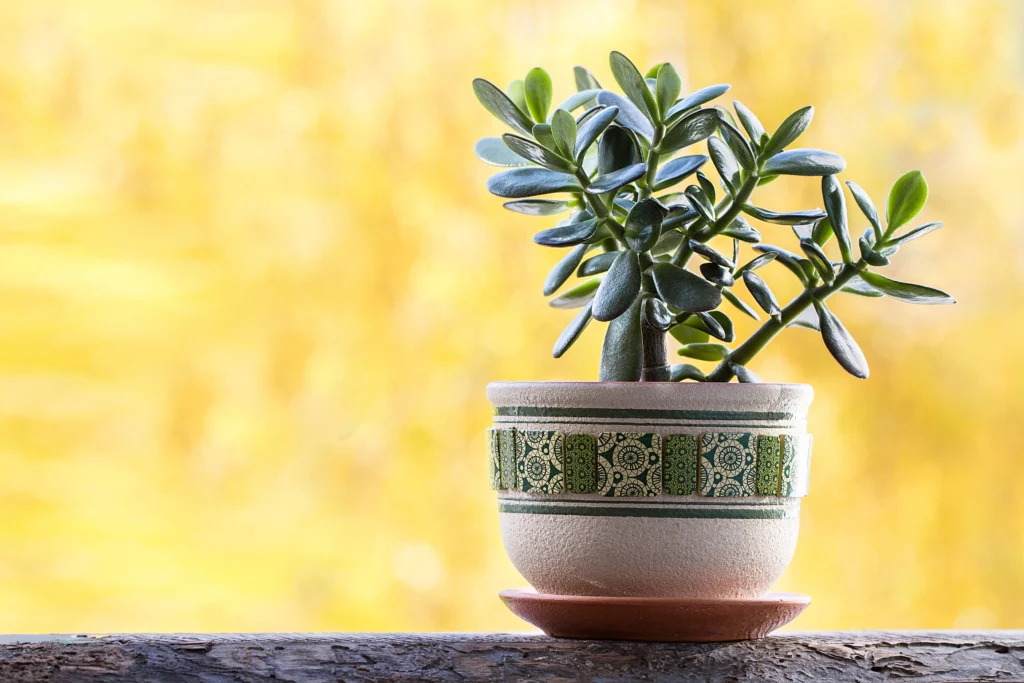
As one is well aware of the fact that jade plants are tough to break, it doesn’t mean they can’t be harmed. Like any other succulent, your jade also needs to be taken care of in the best possible manner. Here is a brief as to what taking care of your jade might entail.
1. Light: Your jade succulent is known for loving light, especially when they are young. When they are in the growth phase, you should expose them to bright, indirect sunlight to help them thrive.
Just remember to not leave them under direct sunlight or your plant might get harmed.
2. Water: During the spring and summer, water your plant often so that their soil is moist but not wet, this can be ensured by using well-drained soil. Reduce the watering during the winter season to prevent root rot.
3. Potting and repotting: Jades don’t need to be repotted frequently. Typically, you can do this every 2 to 3 years for small plants, and for the bigger ones, every 4 to 5 years would do.
Repotting needs to be done on a priority basis only when you see that your plant has started outgrowing the pot that was its home.
4. Temperature: Your jade plants will prefer average household temperatures ranging from 65 to 70 degrees Fahrenheit. At night and during the winter season, jade plants can handle lower temperatures, up to 55 degrees Fahrenheit but make sure that you don’t test your plant a lot.
5. Soil: In the case of a jade plant, a succulent-specific blend is your best bet. Ideally, the soil that houses your jade should have a neutral to slightly acidic pH level, and you should drain it well to prevent excessive moisture from accumulating and causing fungal growth in your plant.
Also, not a well-drained soil variety might accumulate extra water and lead to root rot.
6. Fertilizer: For the best possible results, feed your jade plant a controlled-release fertilizer at the beginning of the season or weekly with a weak liquid solution.
Make sure that the fertilizer you use is a balanced mix in 20-20-20 at one-quarter strength on mature plants, and one with lower nitrogen concentration for younger plants.
Jade Plant and Wrinkled Leaves
It is quite obvious that healthy jade plants have thick stems and fleshy leaves. When you notice your jade plant looking wrinkled, it’s their way of telling you something isn’t quite right.
The good news is that often, wrinkled jade plants can easily be rejuvenated by altering the way you care for your green friend. But be careful not to assume you can water your jade plant the same way you water every other indoor plant. Jades tend to have quite different growing requirements.
Here is what might cause these wrinkled leaves and what might help your wrinkled jade recover from the predicament.
1. Underwatering
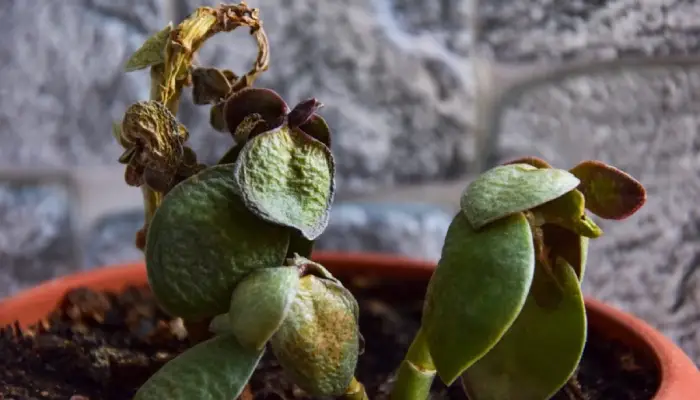
It is a jade’s nature to store water in their leaves, which allows the plants to survive dry periods. The leaves of a fully hydrated jade are plump, whereas thin, wrinkled jade leaves are generally an obvious sign that the plant needs water.
But as educated individuals, we should not go by appearance alone and never water without feeling the potting mix first. In an ideal scenario, water only when the potting mix is dry nearly to the bottom of the container. If you’re not sure, you can always use a finger test to test the moisture level.
In an ideal scenario, jade plants typically require watering once every 2 weeks during their growing season in the Spring and Summer and once every 3 to 4 weeks when the winter season is right around the corner to maintain the optimal balance of moisture so that the leaves look healthy and plump and you avoid the risk of overwatering.
How to deal with the issue?
Jade plants, when wrinkled due to drought stress need to be placed in a basin of water for about 10 minutes to quench the thirst of the plant with a good drink, as this ensures proper absorption of water by the soil so that the roots can effectively uptake all the moisture they desperately require.
After this, don’t just go on to pour water on your plant. Let the plant soak up all the moisture they need then let the soil completely dry out.
When the soil is completely dried out, this is the perfect time to give your jade plant a good soak in water, to the extent that water trickles from the base of the pot through the drainage holes as this is a sign that the water has infiltrated the soil properly and reached the roots of your jade.
2. Overwatering
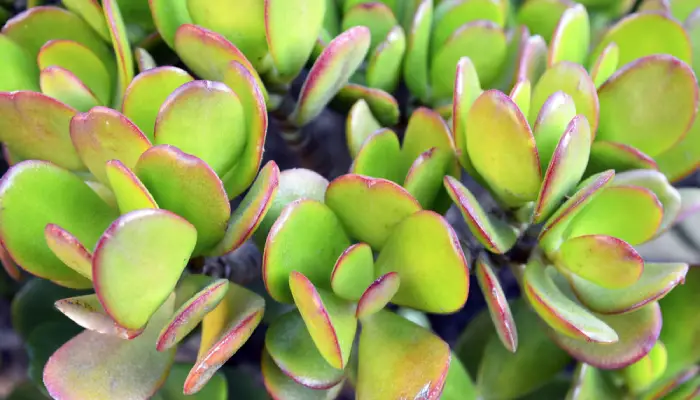
If you end up overwatering your jade plant succulent then it will most likely go through a phase of yellow and wrinkled leaves. If your jade plant succulent has yellow or wrinkled leaves then it might have been overwatered.
We know that overwatering leads to root rot and it’s most likely to suffer, which is the number one most common reason for a succulent to die. Root rot is extremely hard to cure and once your succulent has it, it definitely gets very hard to fix root rot and get your succulent back on track.
So if your jade plant is going through a tough time and pops up with yellow and wrinkled leaves then it most likely does have root rot all because of overwatering.
How to deal with the issue?
Overwatering can be dealt with in a few very simple steps if you are not too late in detecting it. One needs to get rid of whatever excess water exists in the pot as soon as possible to help the plant’s roots.
You can do this by tipping your pot a little while after you have watered it. After some time, the roots absorb the water they need and the excess of it flows out when you tilt the pot. Keep in mind that you have to do this at the right time because if the water is left in the plant for a lot of time, it might expedite decay.
Also, be sure to use a pot that has a proper drainage pattern. The pot should have a drainage hole in the bottom. This helps the excess water seep out from the bottom. In addition to this, it helps add moisture to the roots from below.
All you have to do is play a tray below the plant and place water on the tray and let it seep for about 20 minutes. You don’t have to repeat this too often though.
3. Issues due to dry Soil
Jade plants generally are known to be drought-resistant plants that require the soil to dry out between bouts of watering to replicate the appropriate watering conditions of their native, dry environment.
However, this might not go exactly like that when growing your Jade plant at home because people don’t exactly care about the soil they use. If it is planted in a potting mix that contains peat as peat is hydrophobic (something that repels water rather than absorbs moisture) if it has dried out completely.
The drying of peat potting soil can cause water to run off the surface of the soil, down the side of your pot, and out the drainage hole without actually reaching the roots of your jade.
How to deal with the issue?
Place the potted jade in a basin of water for 10 minutes or so to counter the water repellent effects of peat potting soil mixes. Soaking the soil allows moisture to be absorbed properly so that the jade plant roots can uptake the water they require.
Replace the poor quality soil with a specially formulated succulent and cacti mix that will help retain moisture as a porous structure that allows water to seep in properly, even if it has dried out.
Special succulent and cacti soil has the perfect soil profile of the jade plants’ native environment which allows water to infiltrate and go to the roots while avoiding root rot which is a common problem for jade plants at the same time.
4. Excess Exposure to Sunlight
Jade plants can tolerate some time under the direct sun (this sometimes causes the leaf tips to take up a reddish color) but too much time in the sun, particularly in the afternoon sun, can cause the Jade plant stress and will result in wrinkled leaves.
The best combination of the sun for jade plants is up to a maximum of 6 hours of morning sun followed by shade in the afternoon when temperatures tend to be their highest.
The entire time in the sun can contribute to increased water loss from the leaves and cause the soil to dry out quite quickly, to the extent that the roots can struggle to absorb the water before the pot has dried (this happens a lot in the case with small pots that conduct a heat well).
Too much sun also ends up scorching your jade, especially when they are moved from an area of shade to an area of intense full sun without any warning or time to acclimate to the difference in light intensity.
How to deal with the issue?
Try and place your Jade plant in an area of bright indirect light if you notice that the leaves are starting to shrivel so that your plant does not have to face the intense sun and high temperatures whilst it recovers from the suffering.
Water the jade plant with a generous amount of water, ensuring the entire soil is soaked so that the roots can uptake the water they need to restore and still have the reserves of moisture in their leaves.
However, it is important we must emphasize that it is important to still let the potting soil dry out between receiving the water to reduce the risk of roots which is quite a common problem for this drought-resistant plant when cultivated in your homes.
Conclusion
As resilient as your jade might appear to you, they do need your love and attention and do not deserve to be ignored. Since jade plants are so common these days, it is important that we, as gardening enthusiasts, talk about how we can keep our beloved leafy friends healthy and help them thrive.
Let us know in the comments if you have any questions and we’ll be happy to assist you.
FAQs
Q1. Does cold air damage a jade plant’s leaves?
Jade plants tend to prefer some air flow rather than high humidity but if they are directly in the current of air conditioning then the constant stream of dry air can suck the moisture from the leaves and dry out the soil quickly.
Q2. Does repotting the jade help with the situation?
If the yellowing is due to root rot, your plant can benefit from shifting to a new pot. You have to unpot the succulent, then make sure you let the succulent roots dry out on a paper towel for 1-2 days until the roots are completely dry.
When the plant is ready for it, then you can go on and give your plant, with the newly disease-free roots, a new pot.
Q3. Should you fertilize your Jade Plant after repotting?
As a plant that appreciates only low nutrient levels, Jade Plants don’t enjoy fertilization right after repotting. Wait for at least 4 months after the change in the pot before adding any jade plant fertilizer and try not to feed the nutrients in the months leading up to repotting.

